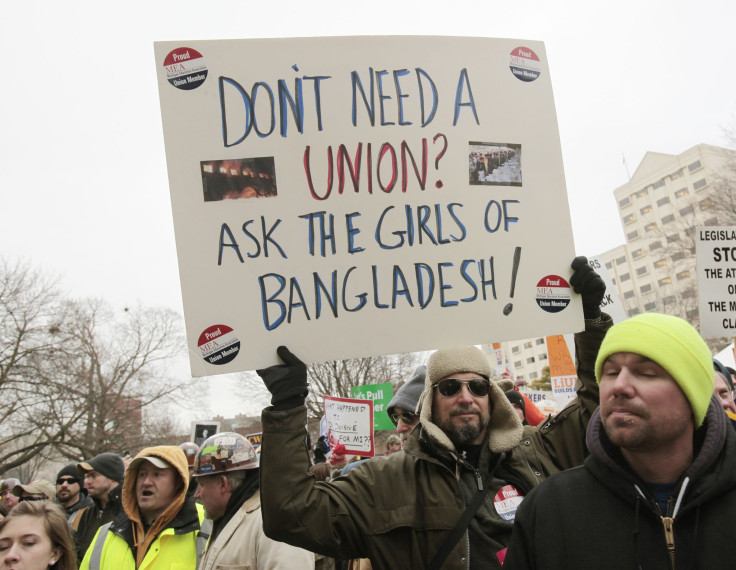What Does Right-To-Work Really Mean? Labor Unions Disappointed As Missouri Becomes Latest State To Enact Law

Missouri Gov. Eric Greitens traveled the state to sign one bill into law three different times Monday. The reason for the ceremony: After a decades-long push from Republicans and businesses, the Show-Me State became the 28th state to enact a right-to-work law.
"This is about more jobs," Greitens wrote on Twitter. "Missourians are ready to work, and now our state is open for business!"
Today, I signed Right to Work. This is about more jobs - Missourians are ready to work, and now our state is open for business! pic.twitter.com/xM4zY71RH1
— Eric Greitens (@EricGreitens) February 6, 2017
Right-to-work has been a major issue in Missouri since 1978, when a right-to-work question was put on a statewide ballot and rejected by voters. The debate has raged on ever since. Opponents contended right-to-work was a political ploy meant to weaken unionized labor in the state, while supporters said it would encourage businesses to move to Missouri.
In light of Monday's news, here's what you need to know about right-to-work:
According to the National Right to Work Legal Foundation, the principle of the initiative “affirms the right of every American to work for a living without being compelled to belong to a union.” But the issue at stake with right-to-work laws is not about whether workers are coerced to join unions — in the United States, no employee can be forced to sign up — but union payments.
It’s common for business and unions to sign contracts that require all workers to pay dues to a union in exchange for the union negotiating with business management. That contract covers all workers, not just those who are unionized. Right-to-work laws allow workers to opt out of paying those dues. However, if they work for a unionized business, they still benefit from the union contract — federal law requires it.
Both supporters and opponents of right-to-work agree on one thing: Right-to-work dilutes union power. But proponents believe this is a good thing, arguing it makes states more attractive to businesses and spurs economic growth, while opponents disagree. They say that without adequate union representation, wages will fall and workers will lose out on potential benefits.
Although people nationwide view unions in an increasingly positive light, union membership has fallen. About 10.7 percent of workers belonged to unions in 2016, falling 0.4 percentage points from the year before, according to the Bureau of Labor Statistics. In 1983, the first year that data became available, union membership was 20.1 percent.
Missouri joins Alabama, Arizona, Arkansas, Kansas, Florida, Georgia, Idaho, Indiana, Iowa, Kentucky, Louisiana, Michigan, Mississippi, Nebraska, Nevada, North Carolina, North Dakota, Oklahoma, South Carolina, South Dakota, Tennessee, Texas, Utah, Virginia, West Virginia, Wisconsin and Wyoming in having right-to-work laws.
© Copyright IBTimes 2024. All rights reserved.






















